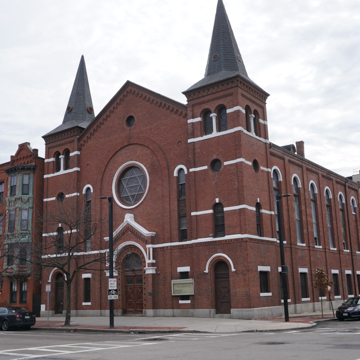You are here
Columbus Avenue A.M.E. Zion Church
Built for Boston's first Reform congregation, the monumental red brick temple at the corner of Columbus and Northampton avenues was once the city's largest synagogue. A leader in progressive Judaism, its membership of assimilated German Jews later created the Federation of Jewish Charities (today Combined Jewish Philanthropies; see FD11). The eclectic variant of Romanesque Revival was then considered appropriate for a synagogue, similar
Writing Credits
If SAH Archipedia has been useful to you, please consider supporting it.
SAH Archipedia tells the story of the United States through its buildings, landscapes, and cities. This freely available resource empowers the public with authoritative knowledge that deepens their understanding and appreciation of the built environment. But the Society of Architectural Historians, which created SAH Archipedia with University of Virginia Press, needs your support to maintain the high-caliber research, writing, photography, cartography, editing, design, and programming that make SAH Archipedia a trusted online resource available to all who value the history of place, heritage tourism, and learning.















